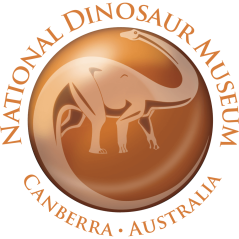Therizinosaurus: The Dinosaur with Giant Claws


Meet Therizinosaurus, also known as the “scythe lizard”, one of the most unusual dinosaurs ever discovered! Imagine a dinosaur with claws as long as a sword—a creature that looked fierce but probably spent its time munching on plants instead of hunting prey.
What Was Therizinosaurus?
Therizinosaurus was a therapod that lived around 70 million years ago during the Late Cretaceous period, in what is now Mongolia. Scientists first discovered its fossils in the 1940s, but they were puzzled by its strange features. Unlike most theropods (dinosaurs that walked on two legs including T. rex and Velociraptor), Therizinosaurus wasn’t built for chasing prey. It had a large, bulky body, long arms, and gigantic claws—the longest claws of any land animal in history! Some reached up to one metre in length, as long as a baseball bat.
Did It Eat Meat or Plants?
Even though Therizinosaurus was related to meat-eating dinosaurs, scientists believe it was herbivorous—meaning it ate plants. This herbivorous theropod fed on leaves, shrubs, and other plant material. Its claws may have been used to pull down branches or defend itself against predators like Tarbosaurus, a fierce carnivore that lived at the same time.
Its small head, and wide belly suggest it needed space to digest plant matter. Instead of hunting, it may have been slow-moving and used its massive claws for protection.
What Did It Look Like?
Therizinosaurus was around 10 metres long, making it one of the largest theropods. Scientists believe it had feathers, even though it couldn’t fly. Its feathers may have helped with temperature control or even been used in display to scare off enemies or attract mates. Its skull was adapted for a plant-based diet, with a beak-like structure for cropping vegetation rather than the sharp teeth typical of many theropods
Imagine a dinosaur with a long neck, a rounded belly, beak and covered in feathers—definitely one of the weirdest-looking prehistoric creatures!
Why Is It Important?
Therizinosaurus teaches scientists about dinosaur evolution. Even though it belonged to the same group as fierce carnivores (meat eaters), it adapted to a completely different way of life. This helps palaeontologists understand how some dinosaurs evolved from hunters into peaceful plant-eaters.
Its discovery also proves that dinosaurs came in all shapes and sizes, and not every big theropod was a meat-eating monster!
Conclusion
Therizinosaurus might not be as famous as T. rex, but it was just as fascinating. With its giant claws, feathered body, and plant-loving diet, it shows us that dinosaurs were more diverse than we once thought. Scientists are still uncovering new details about this strange creature, making it an exciting topic for fossil fans and dinosaur enthusiasts.
Discover even more fascinating dinosaurs at National Dinosaur Museum, we have 150 lifelike dinosaur models, including 23 complete replica skeletons and 300 individual fossil displays, as well as a garden space featuring our 20-metre animatronic T. rex!
